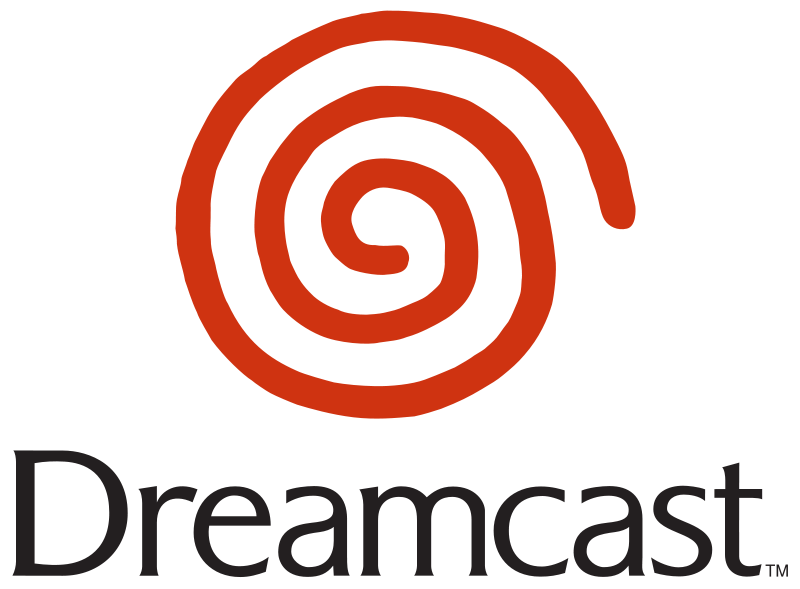Dreamcast was a fighting game powerhouse
If you were playing console games around the turn of the millennium, you probably remember the Sega Dreamcast. While not destined for the long lifespan it deserved, the Dreamcast’s North American debut on 9.9.99 was one of the best console launches of all time. Sega of America, always the skilled marketers, deftly built up an incredible level hype around the squarish white game console that’s “thinking”. And then they delivered the best lineup of launch titles the world has ever seen!
As a diehard Nintendo kid, I wasn’t that much interested in the Dreamcast at first. Sonic Adventure, the blue hedgehog’s first foray into full 3D, looked pretty amazing—especially compared to PS1 and N64 visuals at the time—but I didn’t really care for Sonic. I predicted (accurately, unfortunately) that as soon as the PS2 came out, the Dreamcast would be dead. Then I saw Soul Calibur in motion, and ho-ly shiiiiiiiiit….
Soul Calibur was a truly 3D fighting game with such clean, next-gen visuals and fluid animation, it blew our collective minds and became a true system-seller. After playing the game once, I rushed out and bought a Dreamcast immediately. There were other great games available right away as well—including the universally appealing Crazy Taxi and Madden-killer NFL 2K (which is still my favorite American Football game to this day). But Soul Calibur was the definitely standout, a must-have game at launch.
One of my high school buddies bought a Dreamcast and Soul Calibur on Day1, and I followed suit not long after. While I was a Street Fighter player, he was more into Virtua Fighter, and we never really played many fighting games together. But Soul Calibur changed that. We played so many rounds of SC, always using the same characters—he played Mitsurugi and I used Kilik—and we were so evenly matched, that eventually we decided win rate didn’t matter. We just set the game to infinite rounds and played the exact same matchup for hours.
Besides the standard game modes of Arcade and Versus, SC included a great “Mission Battle” mode reminiscent of SFA3’s World Tour. By completing missions, you earn points to unlock extra costumes, stages, and other features. This provided a very compelling single-player option that more fighting games should try to emulate.
Souls & Swords was just the beginning, as Dreamcast quickly became the ultimate game console for the martial arts enthusiast. The year 2000 in particular was one big kung fu party, beginning with Dead Or Alive 2, released in February. The Dead Or Alive series is more commonly associated with, let’s say, “inventive” breast physics than innovative fighting gameplay—something Tecmo and Team Ninja definitely brought upon themselves—but that’s unfortunate, because the rapid-fire Rock-Paper-Scissors-style gameplay in these games is truly inspired. And for me, the best game in the series has always been DOA2 on the Dreamcast.
While most fighting games allow you to block punches & kicks, and have throws to punish opponents who are blocking, DOA adds a great new element in counters—which will catch a punch or kick and counterattack in spectacular fashion. With strikes (punches/kicks) beating throws, counters beating strikes, and throws beating counters, DOA creates a strategically balanced game of Rock-Paper-Scissors that plays out in impressive 3D fistfights.
DOA2 also had great roster, with plenty of female fighters and lots of ninjas. My personal favorite character was Jann Lee, the “obviously Bruce Lee” character required for any traditional fighting game. Including Ninja Gaiden’s Ryu Hayabusa was also a nice touch. I have fond memories of playing DOA2’s four-player tag team mode all night long with my friends, cutting into time we had planned to spend playing GoldenEye 007 and Super Smash Bros.
Of course we cannot forget about the absolute pinnacle of fighting game perfection, Street Fighter III: 3rd Strike. Back in the day, the only home console with any SF3 games was Dreamcast. Street Fighter III: Double Impact (containing the first two SF3’s) dropped in June 2000, while 3rd Strike arrived in October. Playing SF with a Dreamcast controller really convinced me that its D-pad wasn’t actually very good (plus it didn’t have extra shoulder/trigger buttons for PUNCHx3 or KICKx3), but it didn’t matter. This was the only way to play 3rd Strike at home at the time, and for that reason alone, it was glorious!
The day I picked up 3rd Strike was the day I realized the Dreamcast was THE system for fighting games. As I’ve said before, 3rd Strike is simply the greatest fighting game of all time, and having it at home was amazing. The version on Dreamcast even included seven pages of options in the “System Direction” menu to fine-tune the game to your particular liking, allowing you to toggle on/off everything from air parries to super move/super arts cancels. The regular game options also included adjustable damage, which Mike and I used to dial all the way down and make rounds last longer. Too bad they never seem to include that option in fighting games anymore.
While SF3 may have been the Kelleher brothers’ favorite, the crazy king of crossovers, Marvel Vs Capcom 2, also found a home on Dreamcast. It was definitely gonna take you for a ride! When Sega announced that they were discontinuing the Dreamcast, I remember my local Target market down all of their DC games, from $50 or $60 down to 20 bucks. So I went straight out to Target and bought three games that day, one of which was MvC2. And hot damn, it did not disappoint!
With 3-on-3 tag team matches and a roster of 56 playable characters—which I cannot stress enough, was absolutely insanely at the time—MvC2 was a truly spectacular game! I had been a huge fan of X-Men Vs Street Fighter, as that combination of my two favorite things had really blown my wee little mind in 1995. So the following games in the series were definitely of interest, though perhaps not quite as magical for me. Still, it was impossible not to be impressed by the utter craziness of it all. I mean hell, the game is so big, they had to include two Wolverines. That’s nuts! And the soundtrack was one of the most annoyingly catchy in video game history.
The fighting game classics continued to arrive on Dreamcast even into 2001. While this one may have been more of a sleeper hit, I absolutely loved Project Justice, which released in May 2001. A sequel to Rival Schools on PS1, Project Justice provided fighting game fans with something we desperately wanted: more Rival Schools! The 3D fighter was criminally underrated, sporting great assist mechanics, genuinely funny humor, and some of the best character designs around.
Project Justice stuck to the Rival Schools formal, but cranked everything up a notch. Instead of the janky PlayStation polygons, Project Justice’s models were smooth and clean; each character more accurately resembling their anime-styled artwork. (That artwork was killer, by the way, some of the coolest, most consistently stylized art any game has ever had.) New characters were added to the roster, some of them even hilarious than the wacky fighters seen in the original. And the story mode, while not the deepest narrative, was fully fleshed out and well delivered. On a system already bursting at the seams with fighting games, Project Justice was a solid, refreshingly original fighter, and a damn good time.
What’s crazy is, there were so many other great fighters on Dreamcast that I didn’t actually play at the time. Street Fighter Alpha 3, for example, I already had on PlayStation and had just poured tons of hours into, otherwise I probably would have picked up the Dreamcast version as well. There was Fatal Fury: Mark of the Wolves, The Last Blade, Capcom vs. SNK, The King of Fighters: Dream Match 1999, Virtua Fighter 3tb, Plasma Sword...the list goes on and on. Not to mention less traditional arena fighters like Power Stone (and it’s sequel) that amassed their own cult followings. If there was a fighting game to be played in 2000, it was on Dreamcast.
Of course, no talk of fighting/martial arts games on Dreamcast would be complete without mentioning the console’s legendary opus: Shenmue. While not a traditional fighting game, Shenmue was a fighting game RPG and, dare I say it, the most martial arts-y martial arts game of all time. A precursor to the 3D “open world” games that would become ubiquitous in the following decade, Shenmue was exceptional innovative and wildly ambitious.
Players took control of Ryo Hanzuki, a young karate kid living in Yokosuka, Japan in the late 80’s. When Ryo’s father is murdered (via kung fu) right in front of him, he begins a quest to avenge him, a journey that will eventually take him overseas and require that he fully master martial arts in order to survive. It was epic in scope at the time, though it may seem quite small-scale in comparison to similar games today—in particular the Yakuza series, which is literally just Shenmue with every element cranked up to 11, especially the violence.
Personally, I could not get enough of Shenmue. In fact, when it was announced that Shenmue II would not be released for the Dreamcast in North America, I bought a PAL region copy. This was the first time I had ever purchased an import game. Despite the Dreamcast having terrible copy protections, I needed to use a special boot disk in order to play my European game disks, and it was terribly unreliable. This meant that whenever I could get the game running, I would make the most of it and play for many hours straight. This was a hassle, but I happily endured it to be able to continue Ryo’s story into Guilin, China.
The REDREAM emulator is fantastic. Highly recommended!
After 20 years, you may find it difficult to hook up the old Dreamcast to a modern TV and relive all the hits. Unlike with the GameCube, there aren’t a bunch of commercially available digital adapters for connecting a Dreamcast via HDMI. Never fear though, emulation has you covered. The Redream emulator, available for Windows, Mac, Linux, Android, and Raspberry Pi 4, is absolutely excellent! It might be the single most user-friendly emulator out there for this generation of hardware, super quick to set up and a total breeze use. No need struggling with what BIOS to install, Redream is basically download and play. While the emulator is free, it does have a $5 premium version. This gets you high-definition rendering (4k) and multiple save state slots per game, but more importantly helps fund development. And considering the amazing work that’s been done on this project so far, I’d say five bucks is more than fair. So download Redream if you’re looking to play all your favorites without digging out a CRT TV.
The Sega Dreamcast was revolutionary, and clearly ahead of its time. For one thing, it was the first home console with online capability right out of the box. (It was also the first home console to have an educational typing game with hoards of zombies!) This was Sega’s last hurrah in the video game console market, and they really went for it, swinging for the fences with all sorts of crazy ideas we hadn’t seen before…and haven’t seen since, in some cases. But when I reflect on the Dreamcast, it’s the stellar library of fighting games that really stands out. There were just so many amazing bouts of virtual fisticuffs to be had on Dreamcast, it makes the internal project codename, "Blackbelt", seem very prescient indeed. The Dreamcast was—and still is—the martial artist’s video game console.










